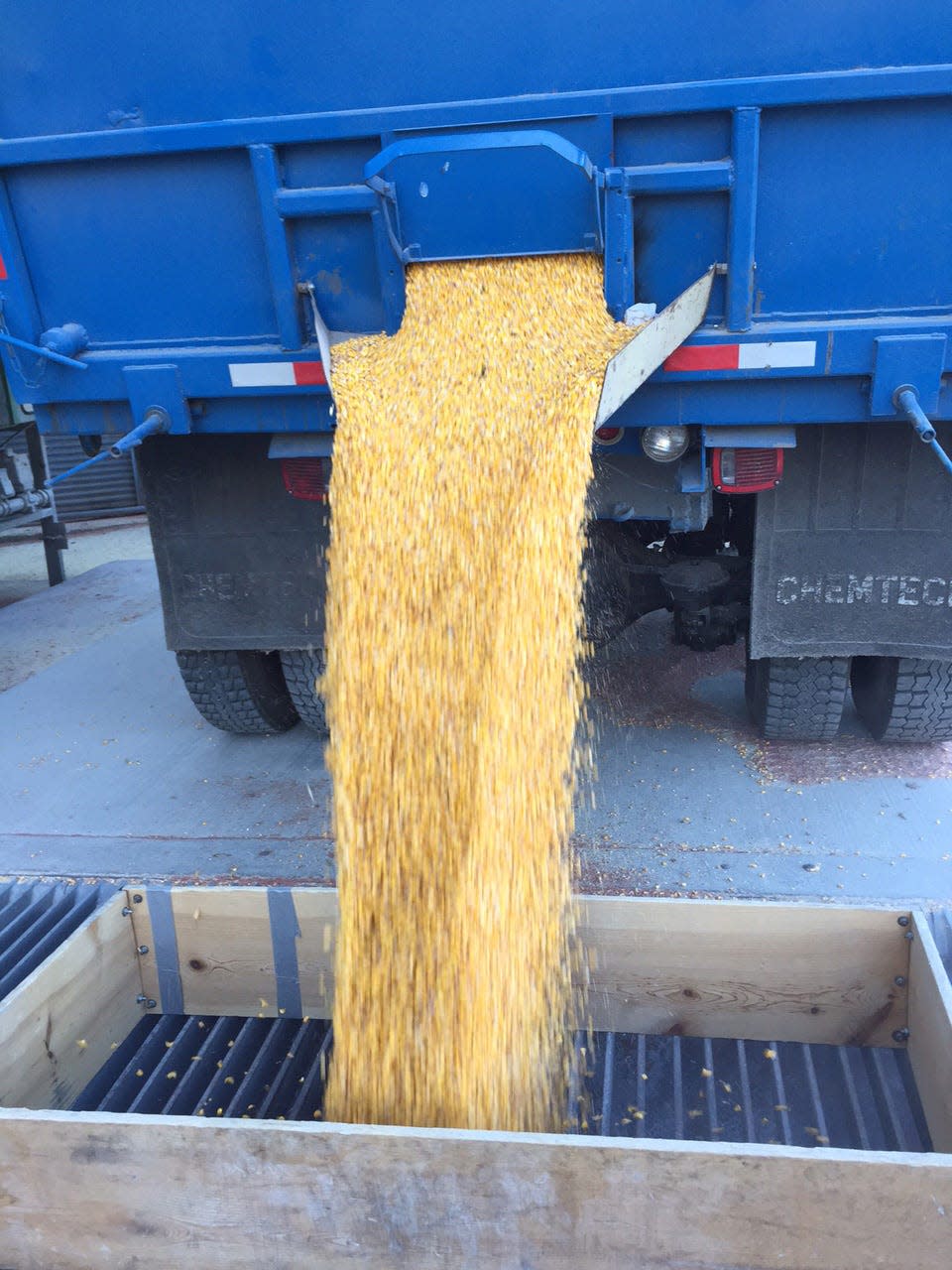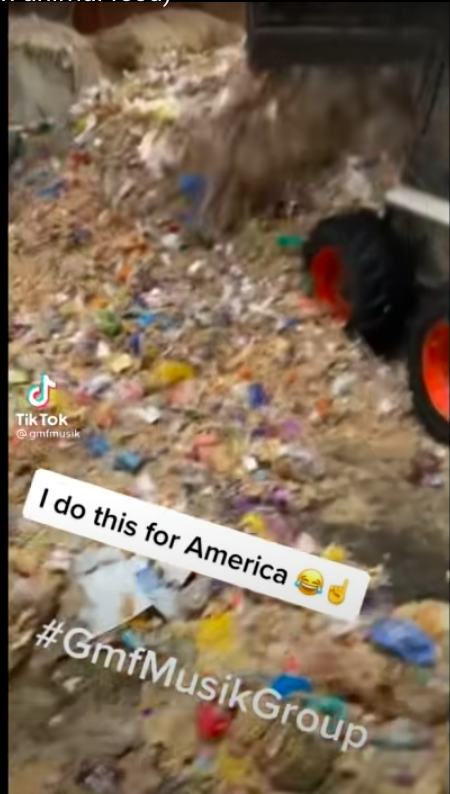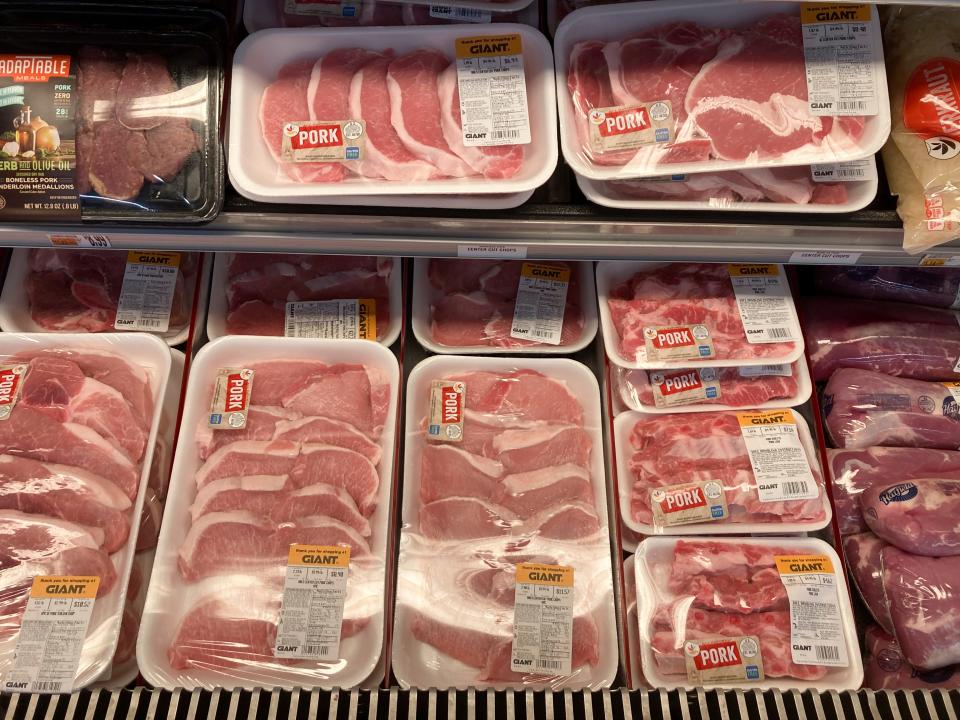Pig feed, plastic and fact-checking a viral TikTok on how pork really gets made in NC

Pork is big business in North Carolina. The industry generates nearly $6 billion in annual sales and supports more than 19,000 jobs statewide. North Carolina sits behind only Iowa and Minnesota as the nation’s largest pork producer.
But last year, a peek into how the sausage literally gets made here shocked many.
The jolt was delivered by a North Carolina man named Emmanuel Moore who, until his firing, worked as a maintenance technician at a grain elevator in Wilson, located about an hour east of Raleigh. The facility manufactures pig feed and is run by Smithfield Foods, a Chinese-owned entity that's the largest pork producer in the United States.
As a maintenance technician, or millwright, Moore said he was privy to each step of the production process. At 29, he said he was earning $27-an-hour and that he mostly enjoyed his job.
But one thing at the facility bothered him: Moore alleged the final feed contained plastic.
“They're feeding America, and like morally, I didn't feel right not saying something,” he said.
With an iPhone, Moore took videos of the production process and posted them to TikTok where they quickly went viral.

Going viral on TikTok
The first TikTok, posted on June 24, showed heaps of still-wrapped bread products rising up a conveyor belt. Another, viewed 4.1 million times, purported to show chunks of plastic in the feed Moore cupped in his hand. His most-watched TikTok, with 23.5 million views and countless reposts, features another shot of plastic tangled in the machinery.
The caption over this video read: “They fired me today for spreading the truth should I post everything.”
Smithfield Foods representatives said they wouldn’t comment on personnel decisions, but that the company, which is headquartered in Virginia and owned by the Chinese corporation WH Group, does manufacture some of its feed from unused bread and baked good products (think hot dog buns and loaves of bread) that often arrive wrapped in plastic.
However, Smithfield officials insist their production process adequately removes this plastic from the final feed.
“What you don't see in that video are vacuums that remove the packaging, the plastic,” said Jim Monroe, a vice president of corporate affairs at Smithfield Foods. “We've got specialized equipment that does that. It removes the plastics and other packaging from the baked goods.”
Monroe summarized the TikToks as "misleading."
Asked if the vacuums catch all the plastic materials, Emmanuel Moore responded via Facebook messenger: “No lol the vacs do not get all the trash and particles out. They are lying. I fixed them daily and unclogged the lines daily.”
With no independent governmental agency checking feed for plastics, it’s difficult to definitively settle who is correct.
When it comes to overseeing animal feeds, North Carolina follows the regulations set by the Association of American Feed Control Officials, a voluntary group made up of local, state, and federal agencies. The AAFCO states that feed derived from recovered retail food, like the feed at Smithfield’s Wilson facility, “must not contain packing materials” including plastics.
But the N.C. Department of Agriculture and Consumer Services, which inspects feed facilities in the state, doesn’t routinely test for plastics. Instead, department spokesperson Heather Overton said the inspections mainly focus on “reasonably foreseeable hazards.”
Should plastic be a foreseeable hazard?
While the thought of pigs eating plastic may be unappealing to pork eaters, especially amid mounting concerns over microplastics in the environment, multiple veterinary scientists said the state’s regulatory approach makes sense: Pigs eating plastic, to the extent it may occur, doesn’t pose a significant health risk to swine or human.
“From a nutrition standpoint, the pig cannot capture any of the foreign contaminant into its blood stream because the particles are too big, and so it all gets excreted out,” said Nicholas Gabler, an animal physiologist at Iowa State University who specializes in swine nutrition and reproduction.

Steve Ensley, a veterinary toxicologist at Kansas State University, said plastic in pig feed is a public relations concern but not a health one.
“Scientifically there's no issue,” he said. “In nature (pigs) are not very discriminating. They'll eat whatever they can.”
While Ensley had no specific knowledge of feed production at Smithfield Foods facilities, he said it wouldn’t surprise him if plastic materials did make it into major pork producers’ final feeds.
“(Getting rid of all the plastic) is adding an extra step, and it’s not cost effective,” he said. “In the big picture, there aren’t many companies that would do that for any species.”
Safe water?: NC Answers: Is tap water safe to drink in North Carolina?
Corn, soy and garbage
It takes a newborn piglet around six months to reach a typical market weight of roughly 270 pounds. In that period, they eat a lot. According to the researchers at Penn State University, “feed is the major expense of any swine production system.”
The vast majority of feed derives from farm-grown grains, corn, and soybean meal. But depending on economics, feed producers will also use recycled materials like restaurant food waste, recovered retail foods, and even garbage.
"Regardless, the feed is going to contain the right nutrients for the age and size of pigs that it's designed to feed," said Bob Mikesell, an animal science professor at Penn State. "There's a lot of math that goes into this."
North Carolina is one of 27 states that allow facilities to feed pigs garbage under the Swine Health Protection Act, which mandates the garbage be cooked at a boiling point — 212 degrees Fahrenheit — for 30 minutes before pigs consume it in order to kill off any dangerous bacteria and viruses.

The U.S. Department of Agriculture oversees garbage feeding facilities and says it checks their cooker temperatures twice yearly.
The Department of Agriculture told the USA Today Network that 33 facilities in North Carolina have licenses to feed pigs garbage, but the department redacted the facilities’ names and addresses, stating that there was a “non-existent public interest in disclosure of the information.”
Kansas State’s Ensley said garbage feeding is safe when done properly, but that companies may logically not want to publicize this information.
“The consumers' perception of what we do in our market is key,” he said.
Other news: ‘Death don’t stop nothing’: The dangerous shifts of North Carolina factory workers
More: Walton War: The North Carolina-Georgia border clash that's maybe, not quite, totally over
North Carolina's track record on recalls
According to Jim Monroe, corn and soybeans are the source of 90% of Smithfield Foods feed. Monroe said the Wilson facility is the only one of the company's 19 mills in the state that produces bakery meal for our feed."
This process is environmentally friendly, as it diverts many tons of waste from landfills each year.
Smithfield Foods says most of the bread and baked goods arrive unpackaged while the remaining packaged products are sent through an extensive process — featuring industrial sifters and vacuums — to ensure the final feed doesn’t contain foreign materials.
Monroe said the company’s feed is screened multiple times through “a very disciplined process.”
He provided the USA Today Network with a lab report from Omaha-based Midwest Laboratories that showed a sample provided by Smithfield from its Wilson facility contained "no objects identified as light filth in the submitted sample," including plastic film.
Swine researchers say pork customers need not be worried about plastics. What feed inspectors focus on instead is the threat of foodborne illnesses said N.C. State University’s Marissa Cohen, who specializes in animal food safety.
“Historically, looking at recalls, our state has done pretty well in the past,” she said.
In the United States, animal feed is regulated by the Food and Drug Administration, and in many places, including North Carolina, the FDA contracts the state department of agriculture to inspect feed facilities to ensure they’re meeting the standards set by the Association of American Feed Control Officials.
Heather Overton of the N.C. Department of Agriculture said the state inspects feed facilities about every two-and-a-half years, using a “risk-based model that takes into account facility type and compliance history,” to determine how often inspections occur.
Brian Gordon is a statewide reporter with the USA Today Network in North Carolina. Feel free to email him at bgordon@gannett.com or follow him on Twitter @skyoutbriout
This article originally appeared on The Fayetteville Observer: NC pig feed plastics claim went viral. But does public have to worry?

